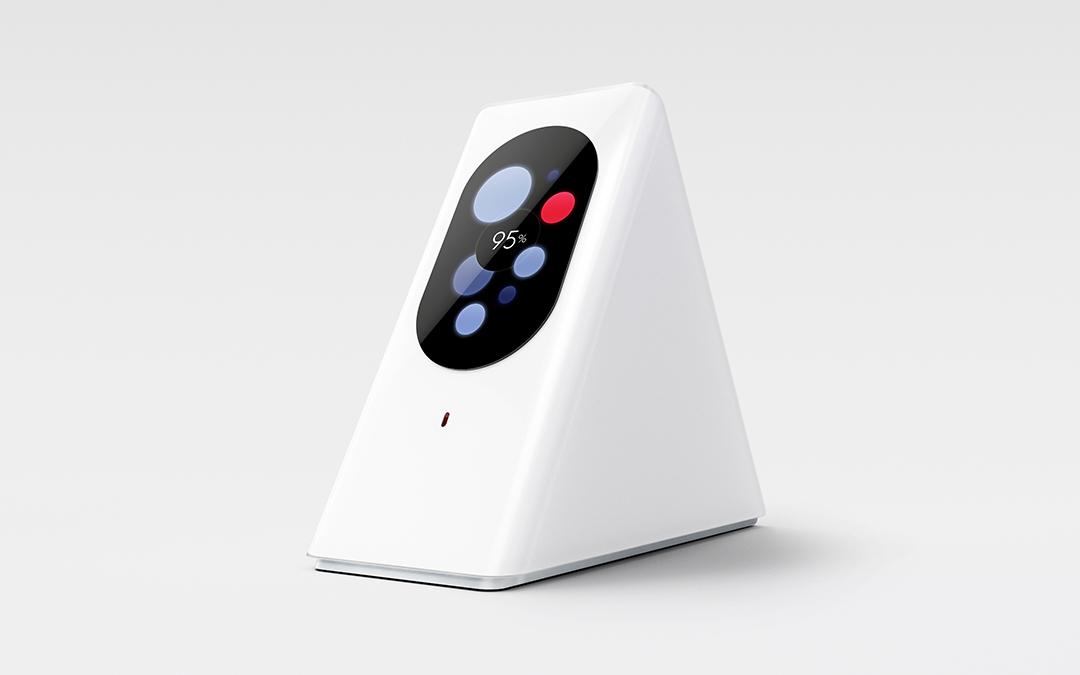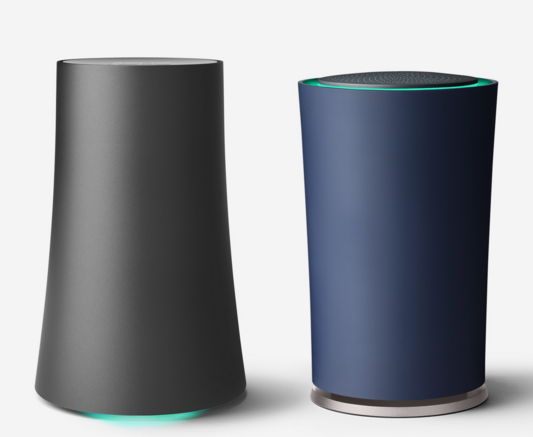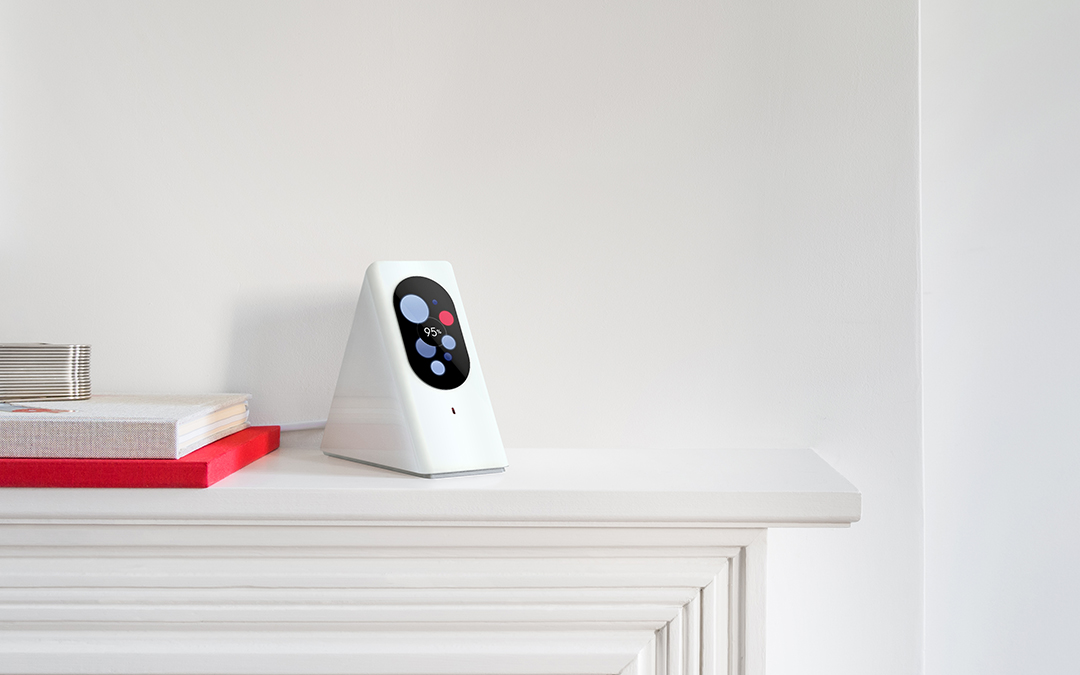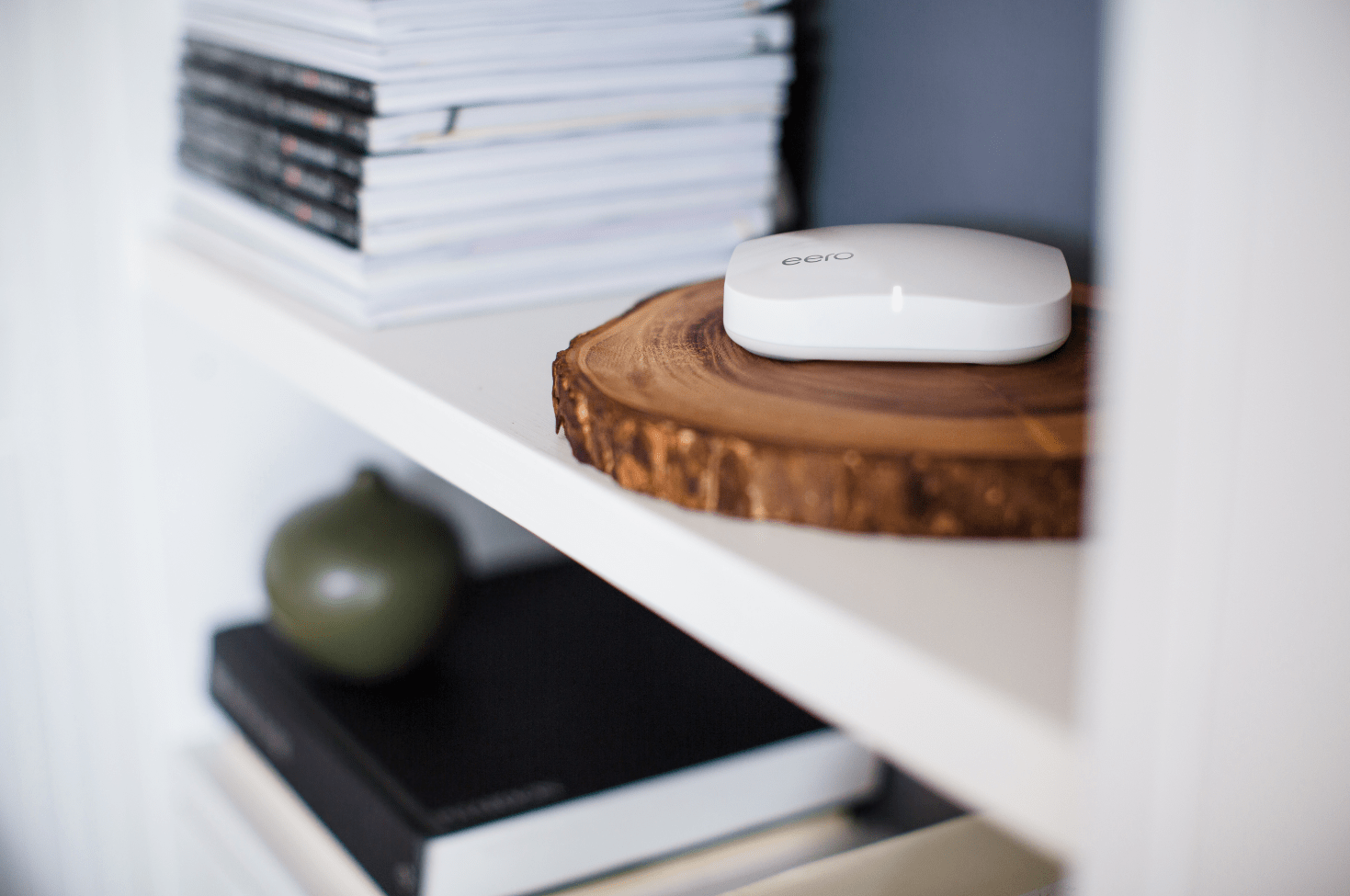
The good: Slick design; Helpful touchscreen and app; Fast performance; Includes parental controls
The bad: Very expensive for a router; Only includes two ports
Who should buy: Those looking for a router that’s attractive and easy-to-use with some cash to spend.
As the front door to my apartment swung shut, I heard an excited yelp as my roommate entered the living room.”What is that?” he asked, poking and prodding at the glowing bubbles covering the screen in front of him. “Do we get to keep it?”
That’s the reaction you might expect to hear from someone who just came home to a shiny new TV. But it’s never the reaction you’d expect to a new Wi-Fi router.
But startup Starry Inc. thinks the routers we rely on for Wi-Fi access should feel just as exciting as the gadgets they help power. That’s the idea behind its $350 Starry Station, a slick, modern Wi-Fi router that looks like it was stolen from The Jetsons’ living room. The Starry Station’s primo design will lead owners to proudly display the device in an open area where it can more easily broadcast its signals. The result is an attractive — albeit expensive — router capable of blazing fast Wi-Fi speeds.
Google OnHub

Made in partnership with technology firms ASUS and TP-Link, Google designed the OnHub to be smarter, faster and prettier than the average router. They’re costly — about $200 — but not completely unreasonable.
Starry Station

After a failed bid to shake up the television industry, Chet Kanojia is back at it with Starry, a bold idea to deliver high-speed Internet to homes via wireless signals. The idea is still in beta, but the company’s gorgeous Starry Station router is available today, though at a steep cost of $349.99.
Eero

Eero says it’s more than just a router — it’s a “wi-fi system,” using multiple (great-looking) stations to blanket even large or oddly-designed homes in sweet, sweet wireless Internet. Each individual Eero costs $199, while a pack of three will run you $499.
The Starry Station’s triangular shape and aluminum-polycarbonate build feels much more premium than the clunky plastic routers of the world. This, combined with its touchscreen, make it stand apart from many alternatives.
The Station’s screen gives owners information about the state of their Wi-Fi network. A tap reveals how well the network is performing, the number of connected devices, or reveal the network name and password. Another button puts users in touch with Starry’s support team, should anything malfunction. The screen is readable from several feet away, meaning users can see how many gadgets are currently on the network with a quick glance.
Setting up the router and checking on service interruptions is a smooth and familiar experience. There’s no need to interpret blinking lights; every bit of information you need is accessible with just a few taps. After plugging the station into a power outlet and connecting it to my modem, the screen guided me through the process of setting up my network. Starry turns this usually mundane task into a game — tapping the Name Generator button, for instance, mashes two random words together to spawn goofy network names and passwords. There’s also an option to enter a title and passcode manually.
The final step of the setup process involves downloading Starry’s app and entering the displayed code on the router. After setup, Starry’s app offers a lot of the same information found on the router’s screen, though it’s also accessible away from home, if you feel the urge to check your network status while out and about.
Starry gives owners precise control over when and how devices in the home can access Wi-Fi, too. Users can set parameters for specific devices, thanks to the ScreenTime feature in Starry’s app. If parents want to limit a child’s Internet usage on school nights, for example, they can set it so that their son or daughter can’t access the Internet on their laptop between 10 p.m. and 6 a.m.
The Starry Station is just as fast as it is attractive. It enabled download speeds of around 100 megabits per second, according to tests I ran using the Speedtest.net app. That’s about as swift as the 5GHz network my Netgear AC1750 Smart Wi-Fi Router usually broadcasts, but it’s impressive nonetheless. Webpages loaded quickly, although the overall experience didn’t feel much snappier than usual.
Power users who prefer to keep several devices wired to their router might be disappointed with the Starry, however. The device only includes two ports: one for plugging in a computer or other device to provide a wired Internet connection, and another for connecting Starry to the modem. That single port will probably be sufficient for most people, but for gamers who like to hardwire their consoles or PC to reduce latency it could be a drawback.
The question isn’t whether or not the Starry Station is a good router. It is. It delivers fast speeds, it’s easy to set up, it offers more flexible controls than most routers, and it looks nice. The question, however, is whether it’s worth $350. Fast and reliable routers can come as cheap as $200 or less, and plenty of other routers have touch screens and the like.
What most distinguishes the Starry Station, though, is that it actually looks inviting. For electronics that we carry around, like smartphones, this is a welcome if not necessary quality. But I’m not sure if that translates to a router, which typically sits on my shelf with minimal interaction required. The Starry Station is a beautiful piece of technology that delivers on its promise, but its steep price is likely more than most are willing to spend on a router.
3.5 out of 5
More Must-Reads from TIME
- Why Trump’s Message Worked on Latino Men
- What Trump’s Win Could Mean for Housing
- The 100 Must-Read Books of 2024
- Sleep Doctors Share the 1 Tip That’s Changed Their Lives
- Column: Let’s Bring Back Romance
- What It’s Like to Have Long COVID As a Kid
- FX’s Say Nothing Is the Must-Watch Political Thriller of 2024
- Merle Bombardieri Is Helping People Make the Baby Decision
Contact us at letters@time.com